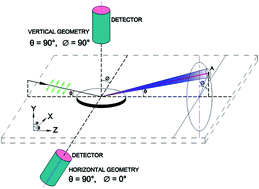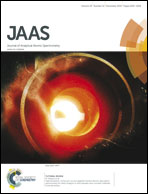Effect of synchrotron polarization on grazing incidence X-ray fluorescence analysis
Abstract
Total reflection X-ray fluorescence (TXRF) spectroscopy has seen remarkable progress over the past years. Numerous applications in basic and applied sciences prove its importance. The large spectral background, which is a major detrimental factor in the conventional X-ray fluorescence technique, limits the element detection sensitivities of the technique to the μg g−1 (ppm) range. This spectral background is reduced to a great extent in the TXRF technique due to the low extinction depth of the primary incident X-ray beam. In synchrotron radiation (SR) based TXRF measurements the spectral background is reduced further because of the polarization of the synchrotron X-ray beam. Here, we show in detail the influence of synchrotron polarization on the spectral background in a fluorescence spectrum and its significance towards TXRF detection sensitivities. We have performed TXRF measurements on standard reference materials to show that one obtains approximately one order of magnitude enhancement in the spectral signal strength by utilizing the anisotropic nature of the scattered synchrotron radiation in the horizontal detection geometry.


 Please wait while we load your content...
Please wait while we load your content...